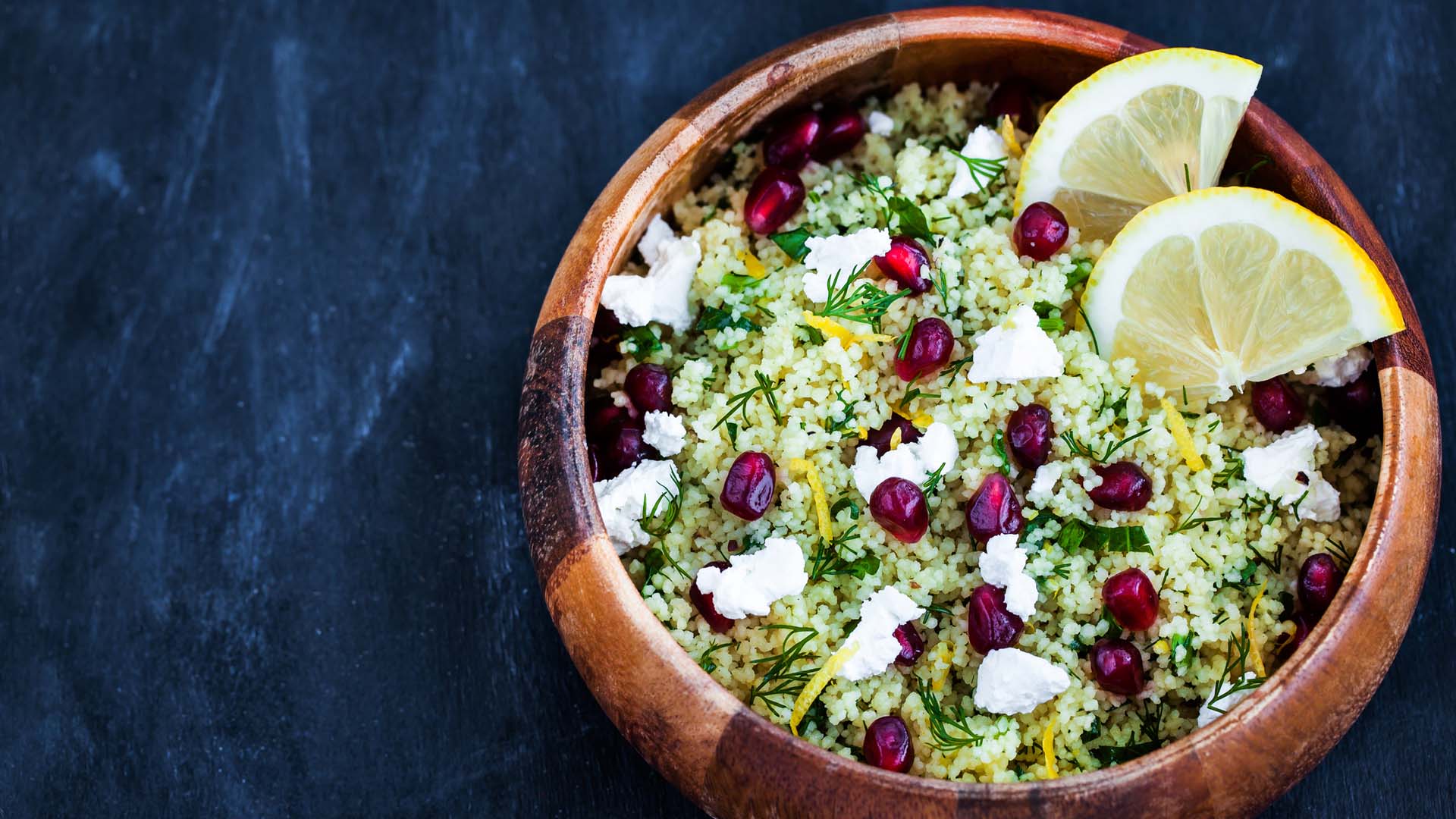Seven healthy low carb grains to include in your diet
For nutritious and delicious options, consider eating these healthy low-carb grains

Healthy low-carb grains can be added to your diet for extra nutrition and variety. They’re a great way to ensure you’re still eating carbs which – despite their bad rap lately – remain essential for a healthy diet.
Every one of us needs carbohydrates as well as protein and fat, but each person needs a different amount of these three main nutrients. The difference between low-carb grains and other grains lies in how they’re processed.
Whole grains are harvested from the plant and dried without much interference in the processing methods. Refined grains are processed to remove the outer layers, which contain much of the vitamins and minerals we need in our diets. By choosing whole grains over refined ones, you can gain maximum health benefits. You will also enjoy an abundance of fiber – a type of carbohydrate that the body can’t digest but is essential for nutrition.
Fiber is present in whole grains and it helps to move digestion along, control blood glucose levels, reduce the risk of cardiovascular disease, and make you feel full, according to the U.S. Food and Drug Administration. As a complex carb, fiber is also digested slower, reducing blood sugar spikes. The American Diabetes Association says it has more vitamins and minerals than refined carbs too.
But how can you get more healthy low-carb grains into your diet? Well that’s relatively easy. Just swap out some of your favorite foods so, instead of white bread, try rye, or replace your instant oatmeal with steel-cut oats. You can try other grains such as bulgur, barley and millet as well. Here, we look at the health benefits of these grains and ways to cook them.
1. Bulgar
Bulgur is made from cracked whole-grain kernels of wheat berries that are parboiled and dried. It has a nutty flavor and it's easy to work with as it cooks very quickly – ready in 10-15 minutes.
Bulgur contains around 14 g of carbs per 100 g serving and it’s a low-glycemic option. It’s also high in fiber and contains essential vitamins and minerals, such as iron, magnesium, and potassium.
Get the world’s most fascinating discoveries delivered straight to your inbox.
Bulgar is common in Middle Eastern and Mediterranean diets, such as in the parsley salad tabbouleh. It’s a good substitute for other grains, such as rice, quinoa, or oats and it can be made into an oatmeal, used as a base for a salad or grain bowl, mixed into soups, or added to burgers.

2. Buckwheat
Buckwheat is a pseudo-grain that has around 20 g of carbs per serving. A pseudo grain, or pseudo cereal, comes from seeds instead of grasses such as true grains. It’s a complete protein – meaning it contains all nine essential amino acids. Bulgar is also a good source of fiber, B vitamins and magnesium.
This ancient grain has been consumed in Asia for years. Archaeological studies believe that buckwheat has been grown in Northern China for food purposes for 6,000 years. Japanese soba noodles are a popular example of a food made with buckwheat.
So what's it like to eat? Buckwheat has a nutty flavor and it’s a great alternative to rice in dishes such as risotto or as a side dish. Buckwheat is frequently used as a flour substitute, such as in bread or pancakes. Despite its name, buckwheat is a gluten-free grain and it can be enjoyed by people with wheat sensitivities or allergies.
3. Quinoa
Quinoa is also a pseudo cereal made from seeds rather than grasses. A portion of quinoa has around 21 g of carbs. It’s a complete protein and an excellent source of nutrients, such as magnesium, folate, and zinc. Quinoa is naturally gluten-free and comes in a variety of colors, with the most common being red, white and black.
Quinoa is often used to add texture and nutrients to salad, while making a good side dish on its own as an alternative to rice. It can be added as a nutritious filler to dishes such as meatloaf, burgers, and stuffed peppers, or in soups or stew. Quinoa also works if added to baked goods such as muffins.

4. Wild rice
For added nutrition benefits, consider swapping white for wild rice. Cooked wild rice has around 21 g of carbs per serving. There are a number of species of wild rice, which is actually a semi-aquatic grass rather than a grain.
Wild rice contains more protein and fiber than regular rice. It has a firmer texture and a nuttier taste. Wild rice can be used in place of white rice in any dish or to substitute for potatoes or pasta. It’s also nice for adding variety to salads, soups, and pilafs. Or try it in a stuffed squash, mushroom, or bell pepper dish.
5. Couscous
Couscous is made of small granules of rolled durum wheat semolina. Durum is a common pasta wheat, containing gluten, and protein rich. Couscous has around 23 g of carbs per 100g and is high in selenium, a trace mineral that helps protect against cell damage and infections.
Couscous comes in three main varieties – Moroccan, Israeli, and Lebanese. Moroccan is the smallest and faster cooking, while Lebanese couscous is the largest. It has a nutty flavor and can add texture to dishes. Whole-wheat couscous is available for an extra fiber boost. It’s often added to salads and stews, or as a side dish to meat. Couscous can also be made into fritters or try it in a Moroccan tagine.

6. Barley
Barley was one of the earliest plants thought to be domesticated by humans. This grain is high in fiber and rich in vitamins and minerals, including selenium and manganese. Cooked barley has about 28g of carbs per 100 g. For the most health benefits, choose barley made from the whole grain, such as hulled or flakes. Pearled barley is the most common, and has a tan color as the outer bran layer has been polished off.
Beef and barley soup is a winner for this grain – if vegetarian, substitute mushrooms for the meat. Barley can also be made into a risotto, grits, or oatmeal, and is also nice added to salads. As barley is a wheat, it does contain gluten.
7. Millet
Millet is not a singular type of grain, rather a group of small-seeded grasses. Cooked millet has around 23 g of carbs per 100 g. It’s gluten-free and high in important vitamins and minerals, such as magnesium, iron, and zinc. Millet is also a good source of dietary fiber.
Millet is a staple food in semi-desert countries in Africa and in India, where it’s made into the flat bread called roti. It’s often added as a seed to bread or made into oatmeal. Millet can be made into a creamy paste, like mashed potatoes, or fluffy, as a rice substitute.

This article is for informational purposes only and is not meant to offer medical advice.
Lindsay Lafreniere is a freelance writer, editor and podcast producer. Lindsay has more than eight years’ experience working in communications, journalism and media relations, including in corporate, non-profit, government, hospital and university environments. Lindsay has worked for various media including broadcasting at the CBC, and in documentary production and magazine publishing at the Walrus, and has also held positions in academic and government communications and corporate online marketing. Lindsay received a bachelor’s degree in Psychology and English from Victoria University in Canada and a Graduate Diploma in Journalism from Concordia University.



